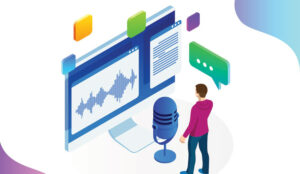Greg Spurrier of Voci Technologies shares two key questions for you to consider if you’re looking at speech analytics to complement your speech recognition solution.
The two are often considered together — some vendors even sell speech recognition and speech analytics as an overall package — but the technology is different, and the solutions serve different needs.
1. How do you make an informed decision that’s best for your business?
There are a few things to keep in mind.
First, when you’re getting started with speech analytics, you need to know what your speech analytics strategy is.
If you don’t have a strategy, then you’re more likely to get distracted by what’s new and attractive, and miss the solutions that are better for your business.
Clarity is important here. What do you want speech analytics for? What business needs is it meant to meet?
You should also have a clear sense of how your competition is using speech analytics. If you’re trying to play catch-up, then your solution has to, at minimum, do for you what their solutions are doing for them.
And ideally, your solution would do more, to give you an advantage.
Even if your competition isn’t using speech analytics, or isn’t ahead of where you are, knowing their position helps guide your future planning.
2. Can you delay your investment — and, if so, for how long?
Once you’ve established the landscape — where you are, where your competition is, and where you want to go — it’s time to get into the details.
What call recording platform are you currently using? Are there limits in place with that solution which have to be considered?
For example, call recording platforms can lock up your recordings — your voice data — so that third-party applications can’t access them. That is, at least until you’re willing to pay for the privilege.
You need to know if you have these kinds of limitations to work around, as that will guide — or restrict — the options available.
In addition, you need to take a look at any existing text analytics and business intelligence platforms that you’re currently using. If these need to integrate with your speech analytics solution, how easy is that going to be?
Will you need to invest development resources (and cost) into making the technologies work together? Are there restrictions in place in your existing technology stack that you need to know about?
You should also investigate the internal use-cases and departmental needs that a speech analytics platform is intended to address. It’s important, obviously, to get internal buy-in. But it’s also important to see if you can get an analytics solution which supports all your business needs, across the enterprise.
There may be some needs which can’t be met, at least not without spending more than you can afford, but it’s better for this to be a decision — this department’s needs can’t be met because it’s too expensive — rather than an accident.
Ultimately, a speech analytics solution is a major investment for your business. You need to do your planning before approaching vendors and being overwhelmed with sales pitches and product information.
































